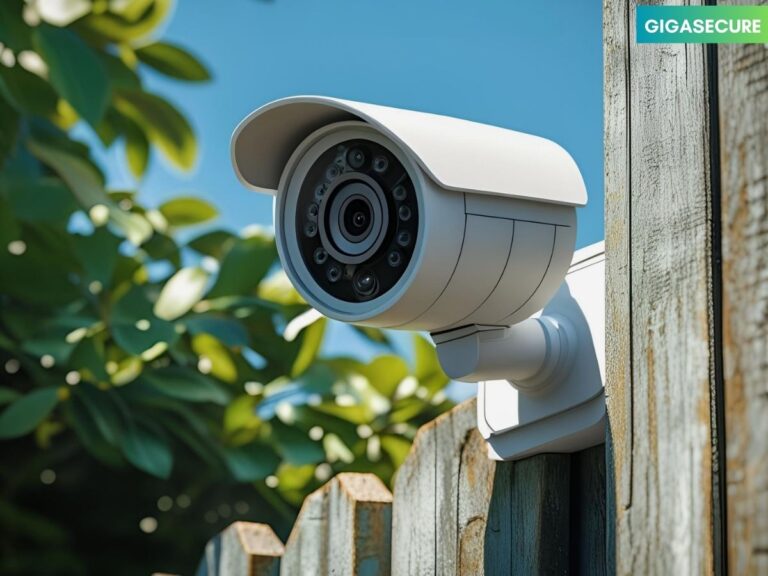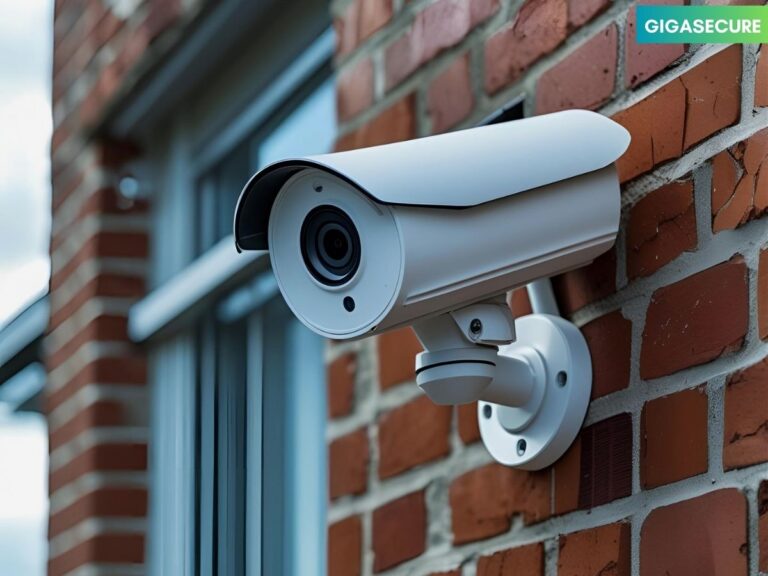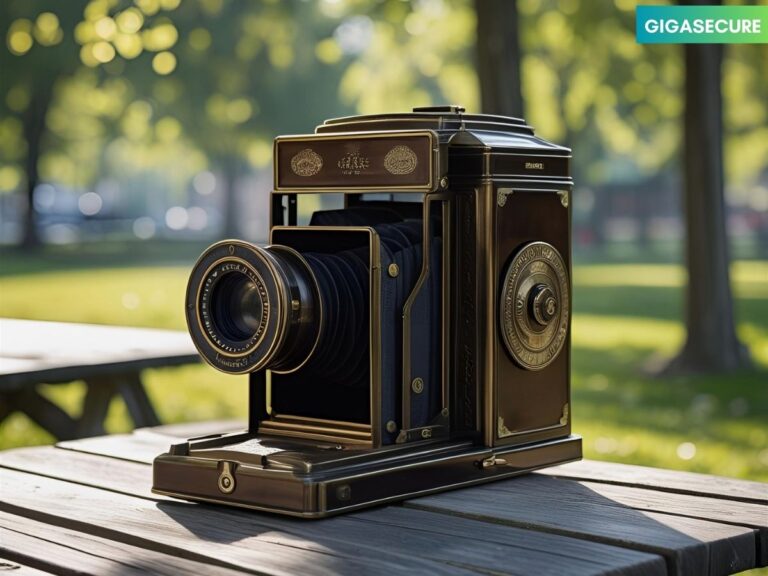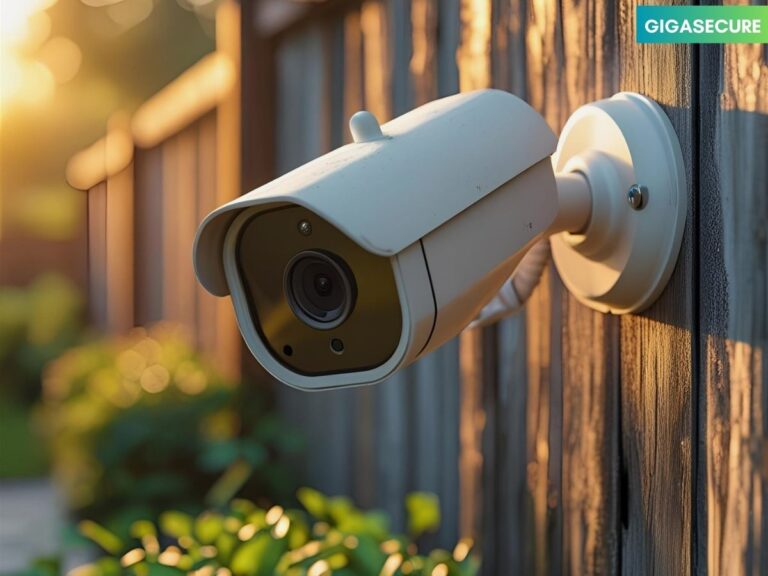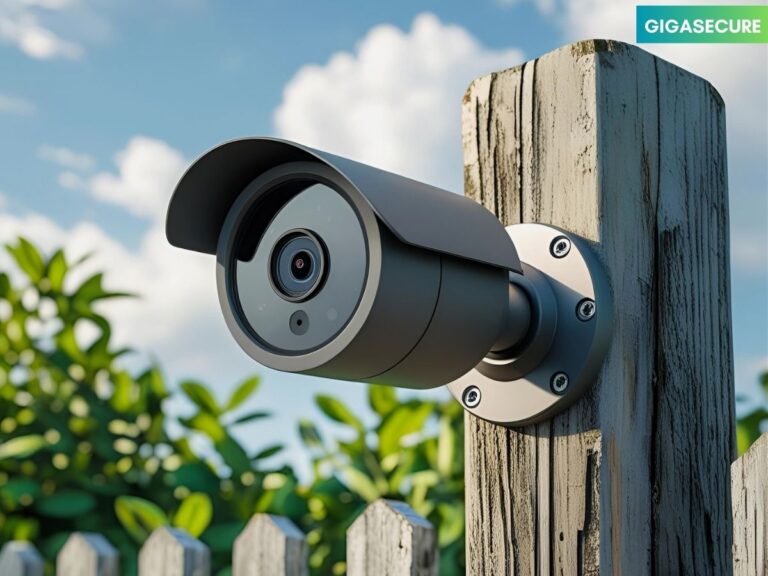Best Outdoor Cameras for Multiple Properties
Managing and securing multiple properties can be tough. It’s key to keep your properties safe and watched. The best way to do this is by using the right outdoor security cameras.
I know how hard it is to protect your properties. I’m here to help you choose the best outdoor security cameras and property monitoring technology. This will keep your investments safe.
The right surveillance system lets you watch your properties from anywhere. It also helps scare off intruders and lets you act fast if something happens. By the end of this article, you’ll know how to pick the best security for your properties.
Key Takeaways
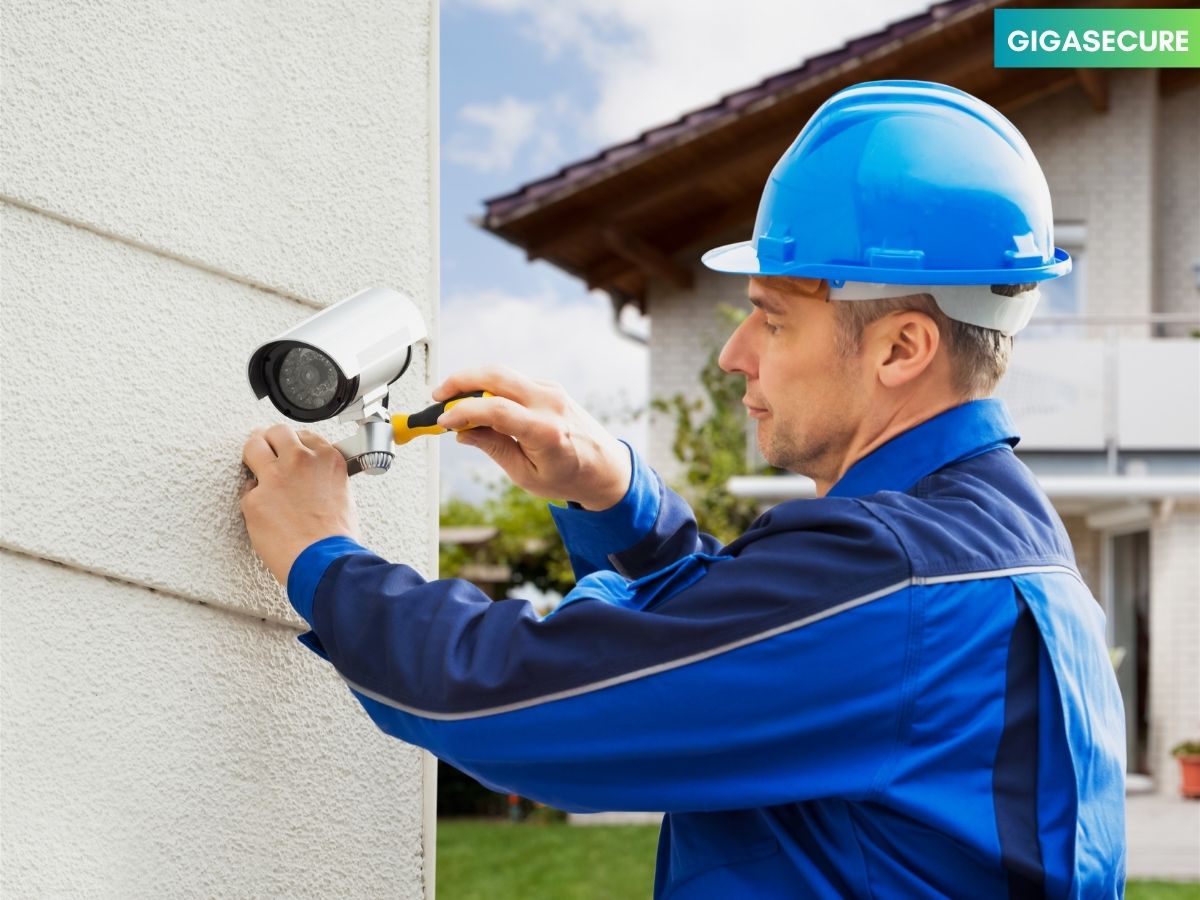
The Unique Challenges of Managing Multiple Properties

Managing multiple properties comes with its own set of challenges. You need a solid security plan to keep everything safe. As a property owner, you face many security concerns that need your attention.
Each property has its own security risks. Some might be in high-crime areas, while others could be in secluded spots. These places are more likely to face trespassing issues.
Security Vulnerabilities Across Different Locations
It’s important to check the security risks of each property. For example, a property in a high-crime area might need strong surveillance systems. This could include cameras that work at night and detect motion.
On the other hand, a secluded property might need cameras that can see a wider area. This helps monitor the surroundings better.
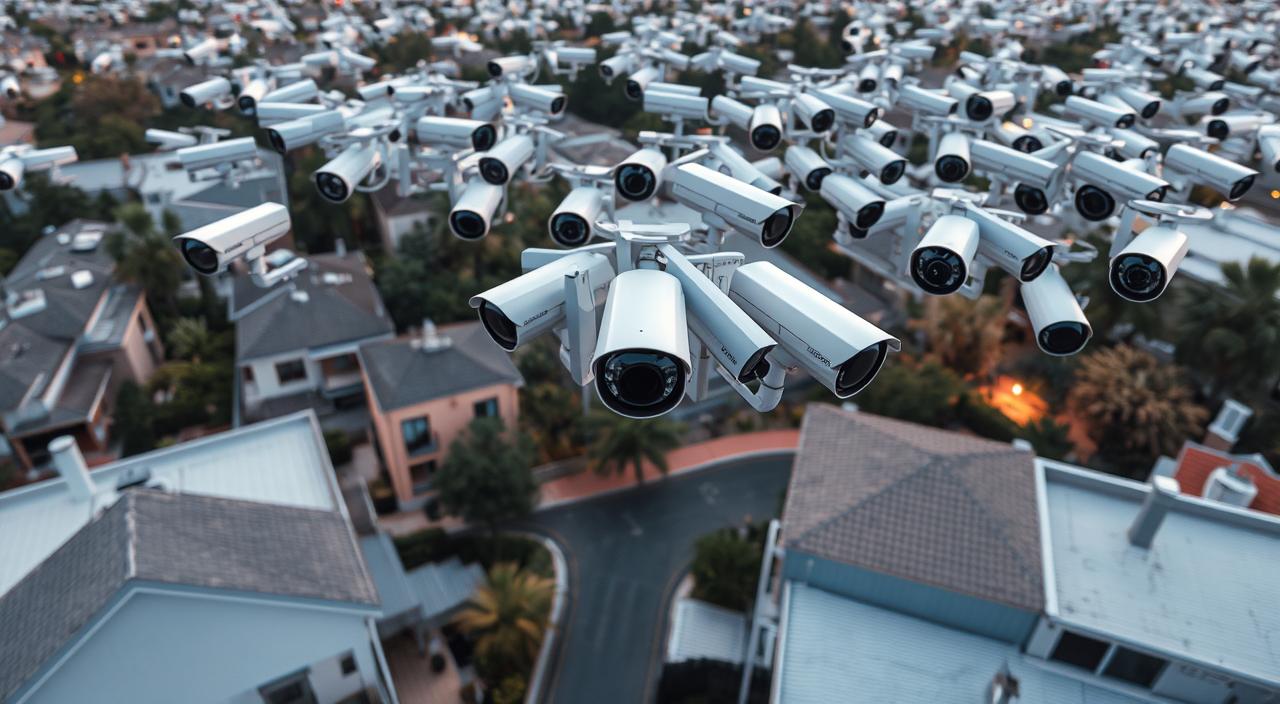
Centralized vs. Decentralized Monitoring Approaches
You have two main choices for monitoring your properties: centralized or decentralized systems. A centralized system lets you watch all properties from one place. This is handy for managing remote access surveillance cameras.
A decentralized system, on the other hand, lets you handle each property separately. This is good if each property has different security needs.
Deciding between these options depends on your specific needs and the properties’ requirements. For effective surveillance, it’s key to understand each location’s unique challenges. Then, choose a system that fits those needs.
Essential Features for Multi-Property Surveillance
To keep an eye on multiple properties, knowing the key features of outdoor cameras is vital. The right features can greatly improve your properties’ security and management.
Resolution and Image Quality Requirements
The quality of your cameras’ images is key for clear footage. The debate often focuses on 4K vs. 1080p resolution for property monitoring.
4K vs. 1080p for Property Monitoring
While 1080p offers decent detail, 4K resolution provides a clearer image. This is great for spotting people and license plates. Here’s what you need to know:
- 4K Resolution: Has higher pixel density for sharper images.
- 1080p Resolution: More affordable but with less detail than 4K.
Field of View and Coverage Capabilities
The field of view and coverage of your cameras are key. Cameras with a wider field of view can watch over more area. This means you might need fewer cameras.
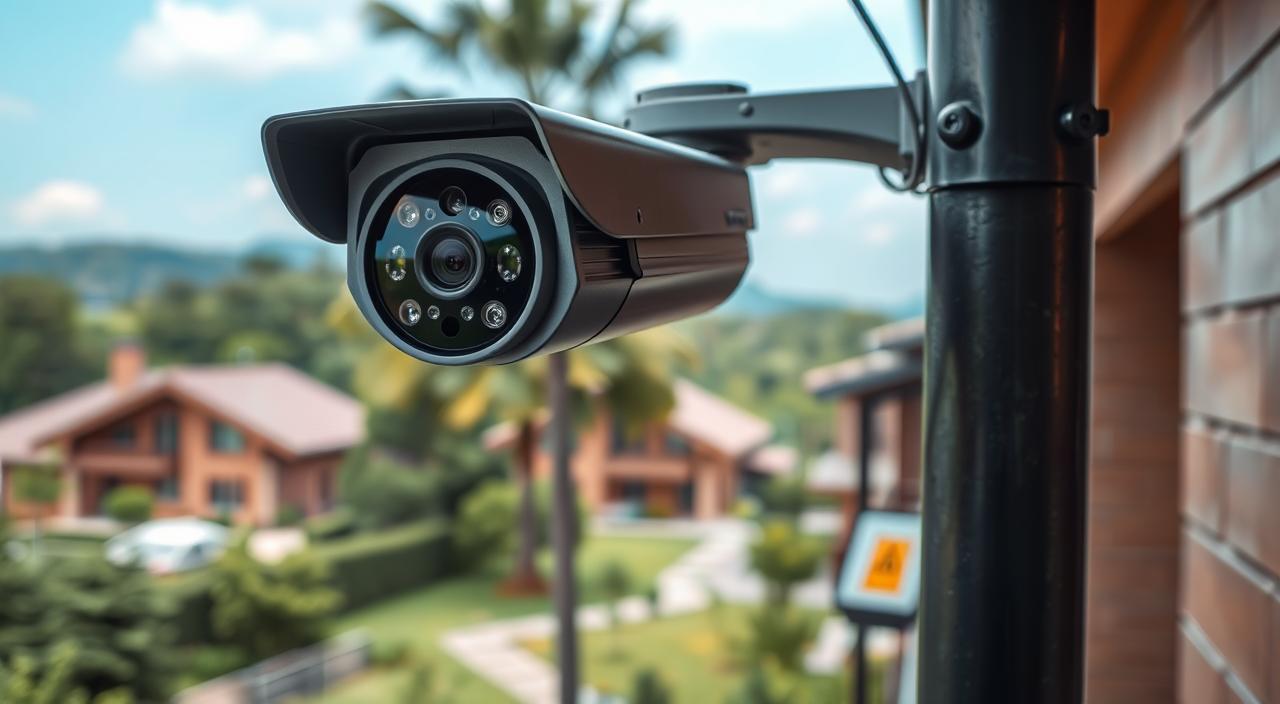
Night Vision and Low-Light Performance
Night vision and low-light performance are essential for round-the-clock surveillance. You have two main choices: infrared and color night vision.
Infrared vs. Color Night Vision Options
Infrared night vision uses IR LEDs for black and white images in darkness. Color night vision uses extra light for color images in low light. Here’s how they differ:
- Infrared Night Vision: Gives clear images in total darkness.
- Color Night Vision: Captures color images in low light, helping with detail recognition.
Connectivity Options for Seamless Management
To manage multiple properties well, you need the right connectivity for your outdoor security cameras. The choice between different connections affects how well your system works.

Wi-Fi vs. Cellular Connectivity Considerations
Choosing between Wi-Fi and cellular for your outdoor security cameras has its pros and cons. Wi-Fi is cheaper and has more bandwidth, but it needs a steady internet connection. Cellular offers more freedom, but it can be pricier due to data costs.
Cellular is great for places with no good internet. But, think about the cost and signal strength.
Bandwidth Requirements for Multiple Camera Networks
The property monitoring technology must handle the bandwidth of your camera setup. Many cameras streaming high-quality video at once can slow down your network.
Plan your bandwidth by looking at camera resolution, frame rate, and how many cameras you have. This ensures your video streams smoothly.
Network Security and Protection Measures
Keeping your remote access surveillance cameras network safe is key. Use strong network security like firewalls and encryption to block unauthorized access.
Encryption Standards for Outdoor Camera Systems
Encryption is key for outdoor camera systems’ security. Use advanced encryption like AES to keep your video feeds safe from hackers. This way, your surveillance data stays secure.
Remote Access and Control Capabilities
In today’s world, remote access to surveillance cameras is essential. As a multi-property owner, it’s key to monitor and control your system from anywhere. This boosts management efficiency and security.
Mobile App Features for Multi-Property Management
Modern surveillance systems come with mobile apps. These apps let you manage multiple properties from one place. They have property grouping and organization tools for easy navigation.
Property Grouping and Organization Tools
Property grouping tools help you organize your properties by location, type, or security level. This makes it easy to access and manage specific properties effectively.

Multi-User Access and Permission Settings
Remote access cameras also offer multi-user access and permission settings. This lets you control who sees live feeds, gets notifications, and changes camera settings.
Staff vs. Owner Access Levels
You can set different access levels for users, like staff or owners. This ensures only authorized people see sensitive info. For example, you can use a permission matrix like this:
| User Role | Live Feed Access | Notification Access | Camera Settings |
|---|---|---|---|
| Owner | Yes | Yes | Yes |
| Staff | Limited | Yes | No |
These features improve your multi-property surveillance system’s security and efficiency. You stay in control, no matter where you are.
Weather Resistance and Durability Factors
For those with multiple properties, the toughness of outdoor cameras is key. These cameras face many weather challenges. So, they must be weatherproof and durable.
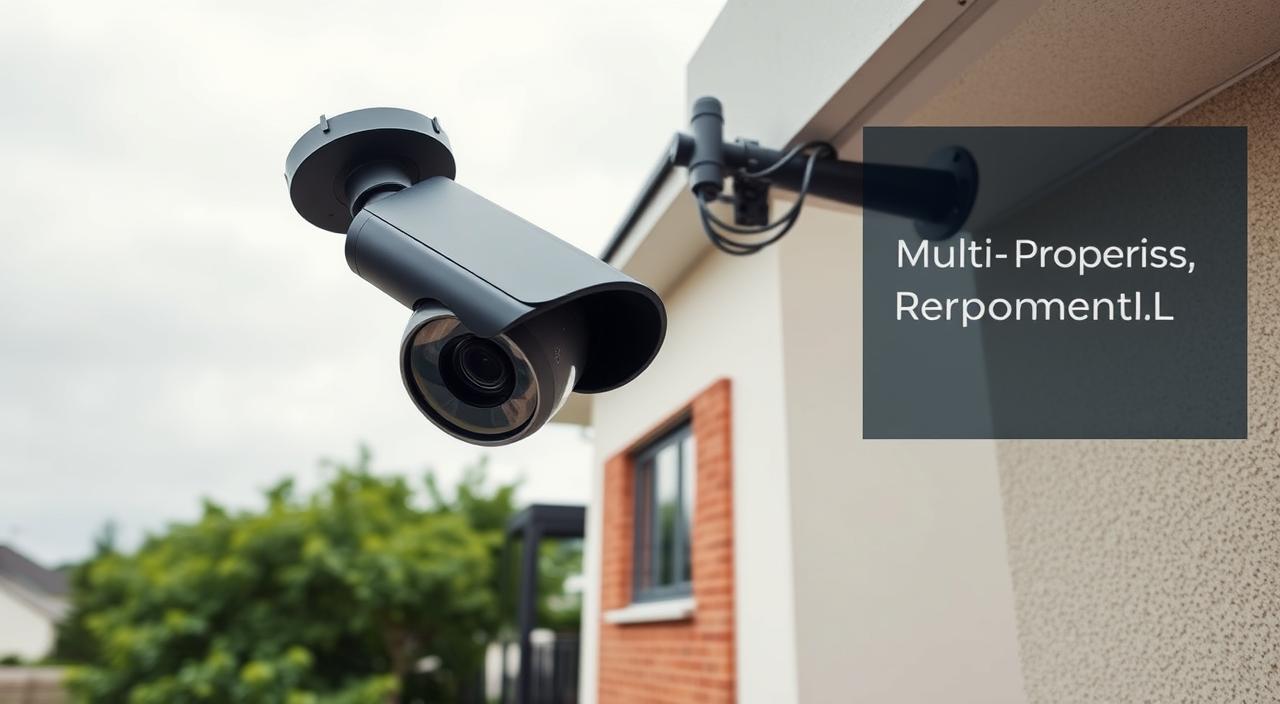
Understanding IP Ratings for Outdoor Use
IP ratings show how well a camera can handle solid objects and liquids. A higher rating means it’s better protected against dust and water. For outdoor use, look for cameras with an IP65 or higher rating. They can handle tough weather.
Key IP Ratings for Outdoor Cameras:
- IP65: Dust-tight and protected against water jets
- IP66: Dust-tight and protected against powerful water jets
- IP67: Dust-tight and protected against immersion up to 1 meter
Temperature Tolerance Across Different Regions
Outdoor cameras need to work well in different temperatures. In extreme climates, cameras that can handle a wide range of temperatures are vital. Some can work in temperatures as low as -20°C or as high as 50°C.
| Region | Temperature Range | Camera Requirements |
|---|---|---|
| Cold Climates | -20°C to 0°C | Low-temperature tolerance |
| Hot Climates | 0°C to 50°C | High-temperature tolerance |
| Temperate Climates | -10°C to 30°C | Standard operating range |
Impact Resistance and Vandal-Proof Features
Outdoor cameras also need to be tough against vandalism and physical damage. Cameras with features like metal housings and impact-resistant materials can resist tampering.
By thinking about these points, property owners can pick outdoor cameras that are reliable and last long on their properties.
Advanced Features for Multi-Property Surveillance Systems
Managing multiple properties means you need top-notch surveillance. Advanced features are key for effective monitoring and security. They give you real-time insights and alerts, making your system more functional.
Power Options: Wired vs. Battery vs. Solar
Choosing the right power for your outdoor cameras is vital. Wired cameras are reliable but limited by their wiring. Battery cameras offer flexibility, while solar ones are eco-friendly and cost-effective.
Comparison of Power Options:
| Power Option | Reliability | Flexibility | Operating Cost |
|---|---|---|---|
| Wired | High | Low | Low |
| Battery | Medium | High | Medium |
| Solar | Medium | High | Low |
Storage Solutions: Cloud vs. Local vs. Hybrid
Storage is key in your surveillance system. Cloud storage is scalable and accessible from anywhere. Local storage gives you control over your data. Hybrid solutions offer the best of both worlds.
Storage Solution Comparison:
| Storage Type | Scalability | Remote Access | Data Control |
|---|---|---|---|
| Cloud | High | Yes | Low |
| Local | Low | No | High |
| Hybrid | Medium | Yes | Medium |
AI-Powered Detection and Analytics
AI detection and analytics boost your system. They send real-time alerts and insights. This tech can spot people, vehicles, and packages.
Person vs. Vehicle vs. Package Detection
AI can tell the difference between people, vehicles, and packages. This cuts down on false alarms and speeds up responses. It’s great for those with multiple properties to watch over.

Installation Considerations Across Multiple Properties
Securing multiple properties with outdoor cameras requires a careful plan. As a multi-property owner, you must make sure your surveillance system works well everywhere.

Choosing between professional or DIY installation is a big decision. Professional installation might cost more but guarantees quality. DIY installation can save money but needs technical skills and time.
Professional vs. DIY Installation Strategies
Professional installation is pricey but ensures the job is done right. DIY installation can be cheaper but requires knowledge and effort. Think about your skills and the complexity of your needs.
Key considerations for professional installation include:
- Expertise in camera placement and configuration
- Access to high-quality equipment
- Warranty and support services
Strategic Camera Placement for Maximum Coverage
Choosing the right spots for your cameras is key. Focus on areas at risk, like entrances and exits, and places with valuable items.
Effective camera placement strategies include:
- Identifying blind spots and areas of high risk
- Positioning cameras at optimal heights and angles
- Ensuring clear visibility and minimal obstruction
Maintenance Requirements and Remote Troubleshooting
Keeping your cameras in good shape is vital. Regular checks for updates, cleaning lenses, and inspecting for damage are necessary.
Remote troubleshooting capabilities can help you:
- Quickly identify and resolve issues
- Minimize downtime and maintain security
- Reduce the need for on-site visits
By focusing on these aspects, you can make sure your outdoor cameras offer reliable security for all your properties.
Integration with Property Management Systems
To get the most out of outdoor surveillance cameras, linking them with your property management systems is key.
This connection boosts security and property management, mainly with multi-property surveillance systems.

Smart Home Platform Compatibility
Make sure your outdoor surveillance cameras work with popular smart home platforms. This makes controlling and watching your properties easier. With property monitoring technology, you can manage many places at once. The main advantages are:
- Unified control interface
- Simplified monitoring and alerts
- Enhanced automation capabilities
Alarm System and Access Control Integration
Linking your cameras with alarm systems and access control offers strong security. This setup lets you quickly handle security issues. Look for features like:
- Real-time alerts and notifications
- Automated response protocols
- Comprehensive access control management
Video Management Software for Multiple Properties
Using video management software for many properties is essential for good surveillance. This software lets you watch and manage footage from different places with remote access surveillance cameras. The main benefits are:
- Centralized video storage and management
- Easy access to footage from multiple properties
- Advanced search and analytics capabilities
Cost Analysis and ROI for Multi-Property Investments
Investing in a multi-property surveillance system needs a close look at costs and returns. As a property owner with many locations, knowing the financial side of outdoor security cameras is key.
Initial Investment vs. Long-term Value
The cost of outdoor security cameras for many properties includes the cameras, installation, and extra setup. This upfront cost might seem high, but think about the long-term gains.
Long-term benefits include better security, lower insurance costs, and less crime. A good surveillance system also boosts property value by adding security and appeal.
Subscription Models and Scaling Costs
Many outdoor security cameras use subscription services for cloud storage, monitoring, and more. When picking a system, think about the subscription costs and how they grow with your properties.
| Subscription Model | Monthly Cost | Annual Cost |
|---|---|---|
| Basic Cloud Storage | $5 per camera | $60 per camera |
| Advanced Monitoring | $10 per camera | $120 per camera |
| Premium Features | $15 per camera | $180 per camera |
Insurance Benefits and Liability Reduction
Outdoor security cameras can bring insurance benefits and lower liability. Many insurers give discounts for properties with strong security, like cameras.
Also, a clear security presence can stop crime, lowering the chance of damage or injury claims on your property.

By weighing the costs and benefits of outdoor security cameras for your properties, you can choose wisely. This choice improves security and makes your investment worthwhile.
FAQ Of Best Outdoor Cameras for Multiple Properties
What are the key considerations when choosing outdoor cameras for multiple properties?
When picking outdoor cameras for different properties, think about a few things. Look at the camera’s resolution, how wide its view is, and if it works at night. Also, consider how it connects, its weather resistance, and power needs.Think about what each property needs in terms of security and the weather. This will help you choose the right cameras for each place.
How do I determine the best connectivity option for my outdoor cameras?
Choosing the right connection for your outdoor cameras depends on a few things. Check if Wi-Fi is available, how far the cameras are from where you’ll watch them, and how secure you need them to be. Wi-Fi works well for most places, but you might need cellular for very remote spots or areas with no internet.
What is the difference between IP66 and IP67 ratings, and which one is suitable for outdoor use?
IP66 and IP67 ratings show how well a device can handle solid particles and water. IP66 can handle strong water jets, while IP67 can handle being underwater up to 1 meter. For outdoor use, look for an IP66 or higher rating to make sure your camera can handle the weather.
Can I install outdoor cameras myself, or do I need to hire a professional?
You can try to install outdoor cameras yourself. But, hiring a pro can make sure they’re set up right and meet your security needs. A pro can also avoid mistakes like bad placement or not being weatherproof enough.
How can I ensure that my outdoor camera system is secure and protected against hacking?
To keep your outdoor camera system safe, use strong passwords and two-factor authentication. Also, update your camera’s software regularly. Using a VPN can encrypt data, making it harder for hackers to get in.
What are the benefits of using AI-powered detection and analytics in outdoor camera systems?
AI-powered detection and analytics can make your outdoor camera system better. They offer features like detecting people, cars, and packages. These can cut down on false alarms, help respond faster to incidents, and give you insights into security events.
Can I integrate my outdoor camera system with other security and property management systems?
Yes, many outdoor camera systems can work with other security and property management systems. This includes alarm systems, access control, and video management software. Integrating them can give you a complete security solution and better manage your properties.
Conclusion
Choosing the right outdoor cameras for multiple properties is a big decision. You need to think about important features, how they connect, and the latest tech.
As someone who owns many properties, knowing how to manage them and the value of a good surveillance system is key.
Investing in a strong surveillance system can really help you keep an eye on your properties. When picking cameras, look at things like resolution, how wide they can see, and if they can handle the weather. This ensures you get the best tech for watching over your properties.
With the right cameras and system, you can feel safe knowing your properties are safe. As you set up your surveillance system, think about linking your cameras with property management systems. Also, look for ways to save money that fit your needs.

